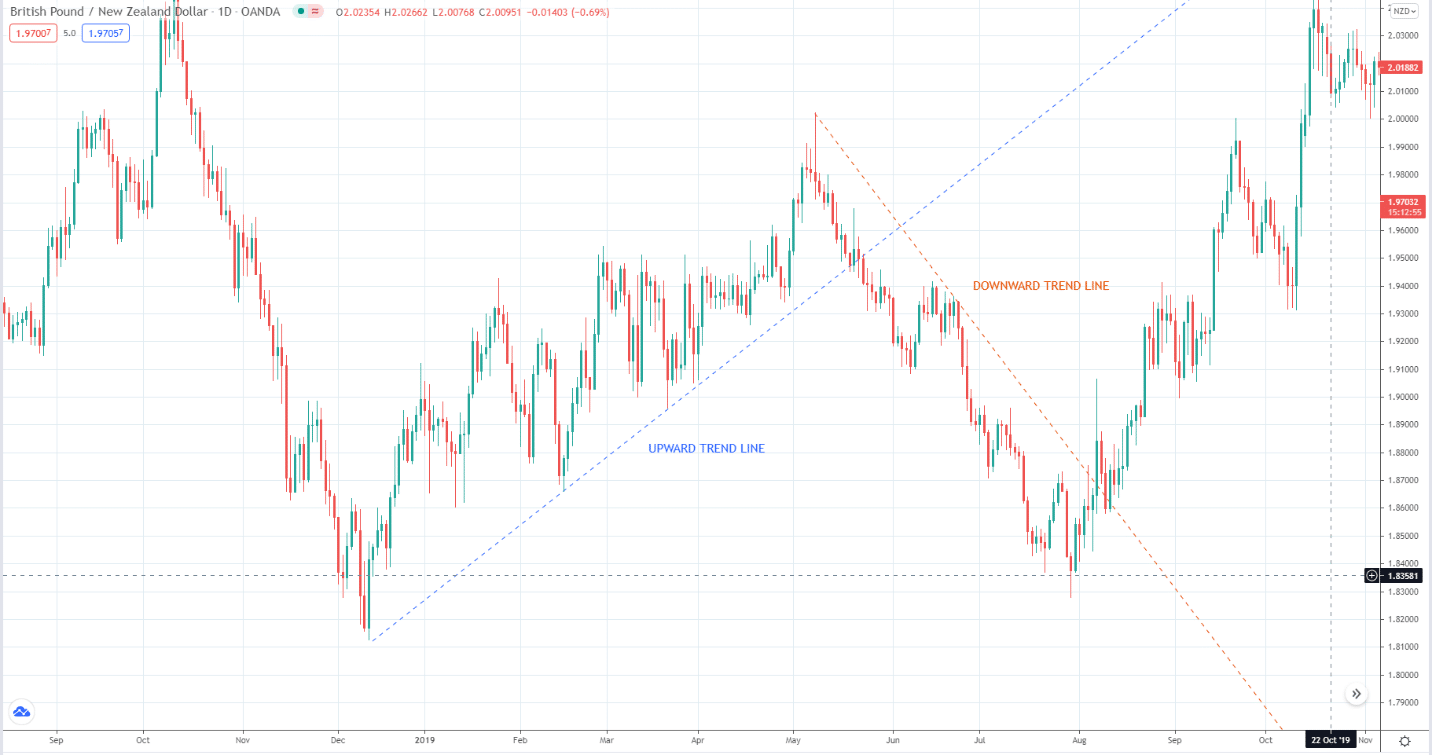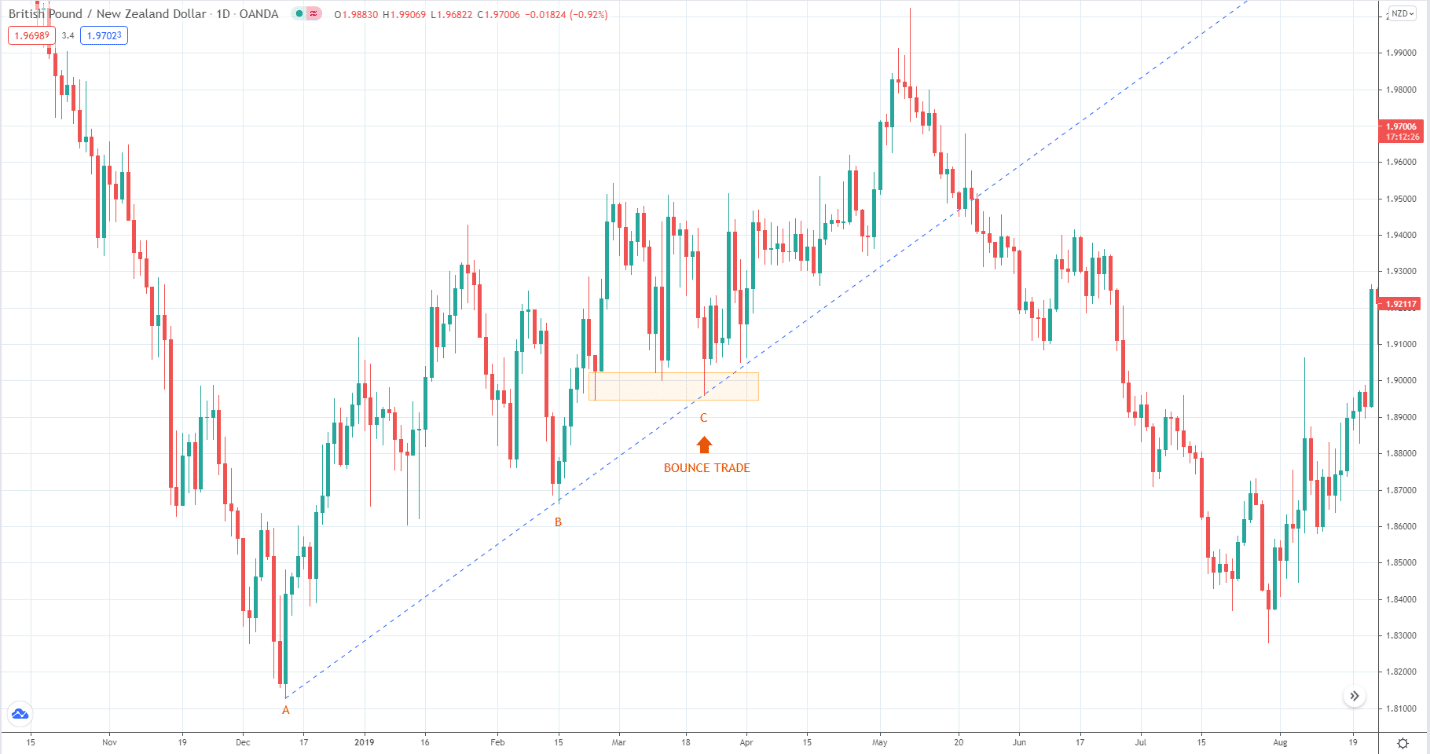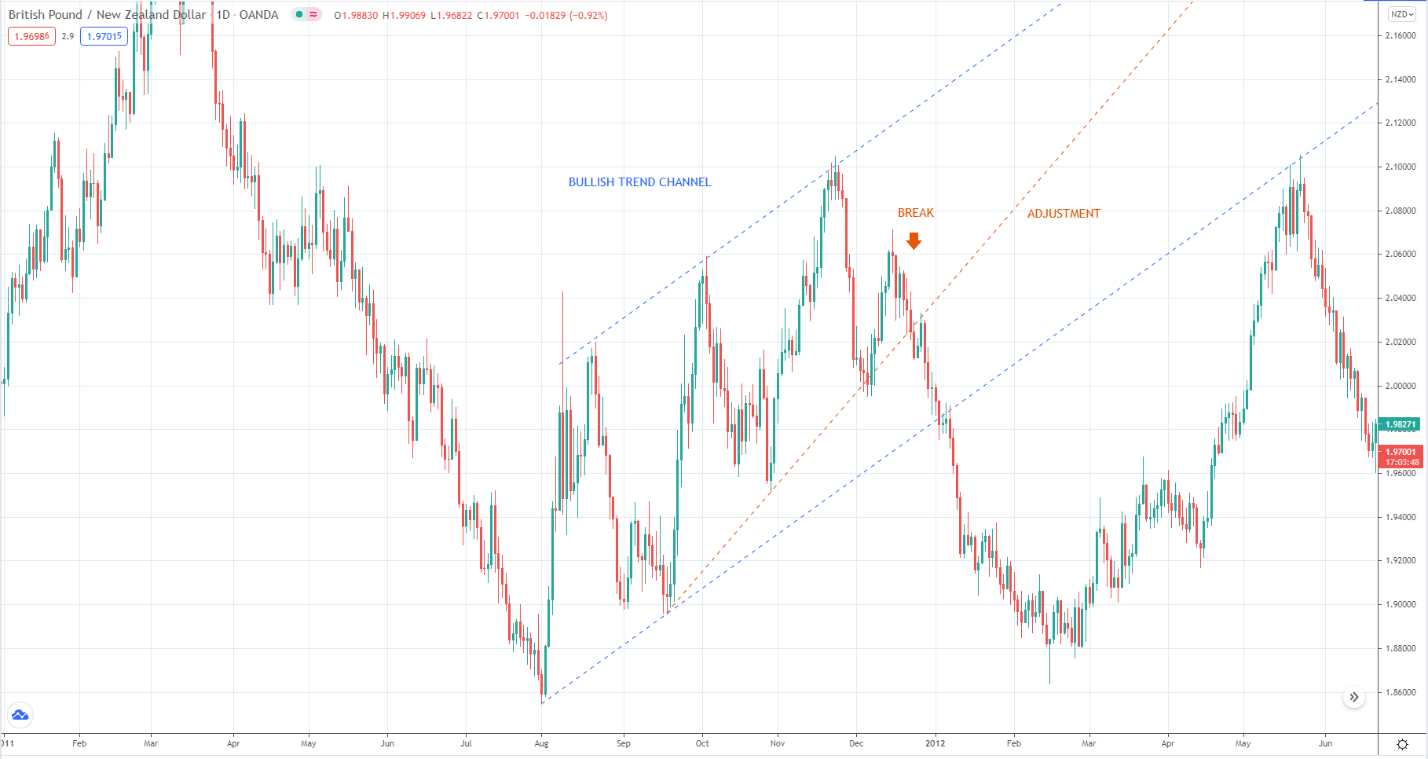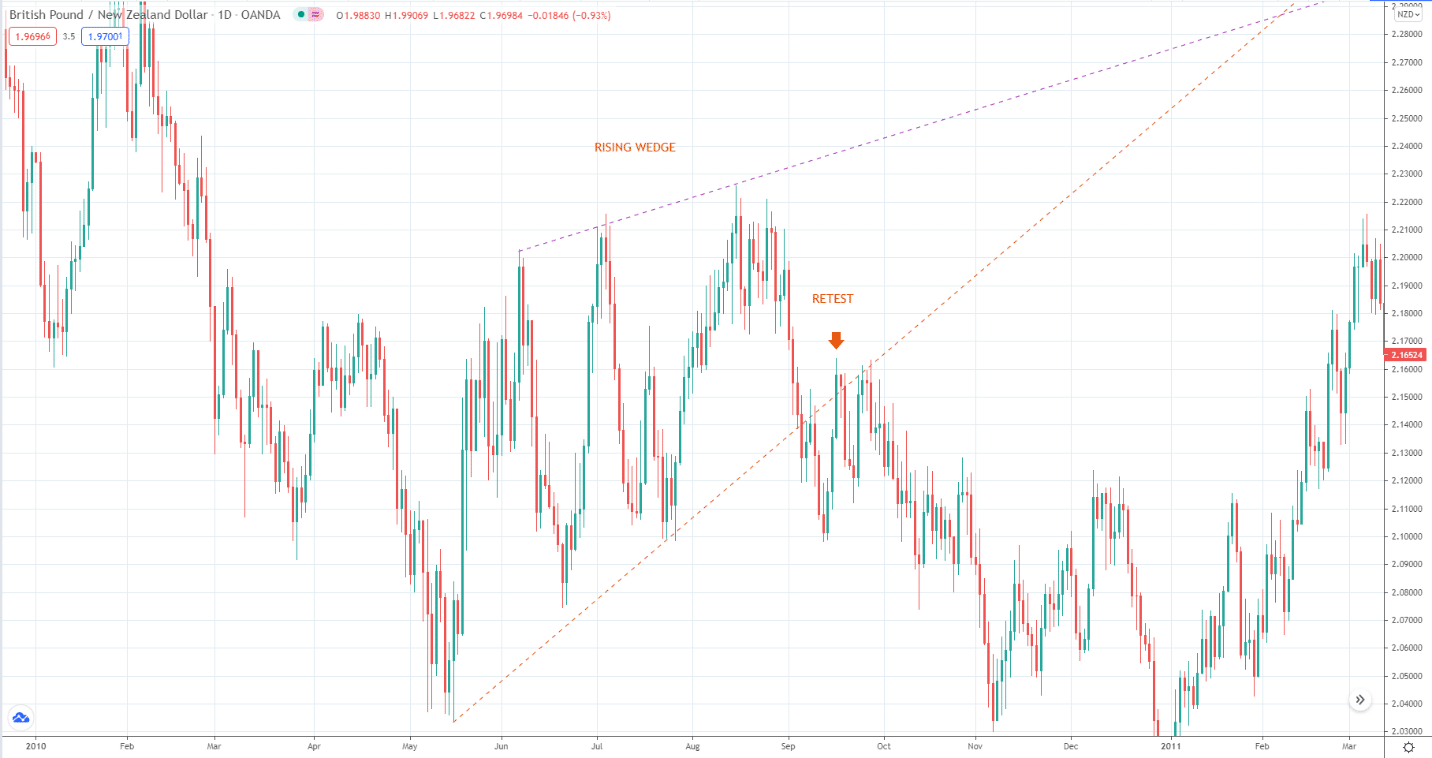A trend line is a popular technical analysis tool. However, many technical traders seem to neglect this tool in favor of other alternatives. The main challenge in trend line adoption is the subjectivity in drawing the lines. More often, traders aggressively attempt to fit the trend line to the market, rendering it less effective.
Types of a trend line

There are two types of a trend line you can use:
- Upward
- Downward
Some call them bullish and bearish trend lines. Others use the names rising and falling trend lines.
While some traders may consider horizontal lines as trend lines in the context of a ranging market, we think otherwise. As the name suggests, trend lines depict the trend, so they have an angle of inclination greater than zero degrees.
The above chart shows the two types of trend lines.
- Draw the ascending trend line below price action to connect swing lows in a bullish market.
- Draw the descending trend line above price action in a downtrend market to connect swing highs at the pullback points.
How to draw trend lines correctly?
A trending market does not move straight up or down. It makes a series of swing highs and swing lows. To quickly see the trend, you can use tools such as moving averages (MA), ZigZag, and trend lines. While MAs and ZigZag indicators draw the lines automatically, you must plot the trend lines manually.
To draw a trend line for a bullish market, you should find a vital swing low and see a higher low to the right. These are the two anchor points that you will use to draw the ascending trend line. Then you can extend the trend line to the right. You start with a vital swing high for a bearish market and find a lower high to the right. Anchor the bearish trend line to these points and extend to the right.
Frequently it is necessary to redraw or adjust your trend lines. You make these adjustments to reflect new information and accommodate new swing points. Price does not move ideally. While you can see the ratio of impulse and corrective swings consistent, this happens infrequently. Trend lines give you only an estimate of the path of an oscillating trend.
Tips on using trend lines
Here are some tips that will guide you in using trend lines:
- You can draw a trend line with two points, but you need three touches to verify the trend line.
- A trend line with a gentler slope is more potent as a support or resistance level than one with a steeper slope. Steeper trend lines may break easier than milder trend lines.
- Similar to support and resistance, the more touches a trend line has, the stronger it gets.
- Do not try to fit a trend line to the market. If the trend line does not provide less effort, the market dynamics are too erratic that drawing a trend line is meaningless.
Trend line trades
There are primarily three types of trades you can take with the trend line. These are the bounce, breakout, and retest trades. Most traders are aware of these trade setups.

№ 1. Bounce trade
Consider the above GBP/NZD daily chart. We located point C by plotting a trend line from anchor points A and B and then projecting the line to the right. Point C is along with the projection of this trend line. You could have taken a bounce trade at point C, as shown in the image.
In this case, the best way to enter the trade is through multiple time frame analyses. As price moves toward the trend line from above after point B, you could have gone to a lower timeframe such as hourly or four hours for an entry.
Another factor that improves the quality of this setup is the presence of support. A rookie trader might overlook this support area, but not a seasoned trader. Therefore, you have at least two factors supporting the potential bounce trade to the upside.

№ 2. Breakout trade
Let us use another example from the GBP/NZD daily chart. This time we present a breakout trade as shown above. Before the breakout trade setup comes into view, we have drawn a lower trend line (blue) and copied this line to mark swing highs. The result is a bullish trend channel.
This chart also shows an example of trend line adjustment. This happens because the uptrend picks up speed, and the previous trend line could not accommodate this change. The orange trend line reflects this trend acceleration. More often than not, acceleration is just a ruse to hide the true intention of prominent market players.
The big boys might stage a show to fool other market participants into thinking that a trend is getting stronger. They want to pump the market and then dump it later as they did here. With more buyers coming into the market, the big boys, who are sellers in this market, can quickly liquidate large sell positions due to the increased market volatility.
If you have seen the falling wedge that formed as price oscillated upward, you could have figured out the market manipulation. If so, then you could have entered a breakout trade the moment price broke down the orange trend line at the point marked above.

№ 3. Retest trade
The above GBP/NZD daily chart shows a retest trade setup. This setup is the trend line version of the classic break-and-retest setup using horizontal lines. The only difference is that the setup uses a trend line instead of a horizontal line.
As you can see in the above image, the price broke down the lower trend line and retested it from below. What adds confluence to this setup is the presence of a rising wedge, which is a robust bearish price pattern. The retest trade is tricky to enter in this case because the price was reasonable when it approached the trend line.
Here is another tip for using trend lines. If you used multiple time frame analyses or waited a little longer, you could see that the upward thrust died down, and then a sell-off followed. It is better to think of a trend line as an inclined support or resistance area instead of a level. This is comparable to how you would treat classic support and resistance.
Final thoughts
The trend line is a powerful technical trading tool. Many trading systems rely on trend lines to enter and exit trades in the currency market. The challenge in using trend lines is drawing them correctly. There is a degree of subjectivity present here. In terms of objectivity, classic support and resistance are slightly better. Despite the challenge and subjectivity involved, trend lines are still valuable and practical tools in technical trading.




